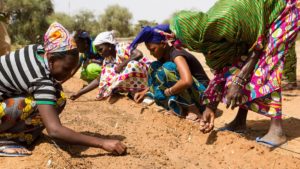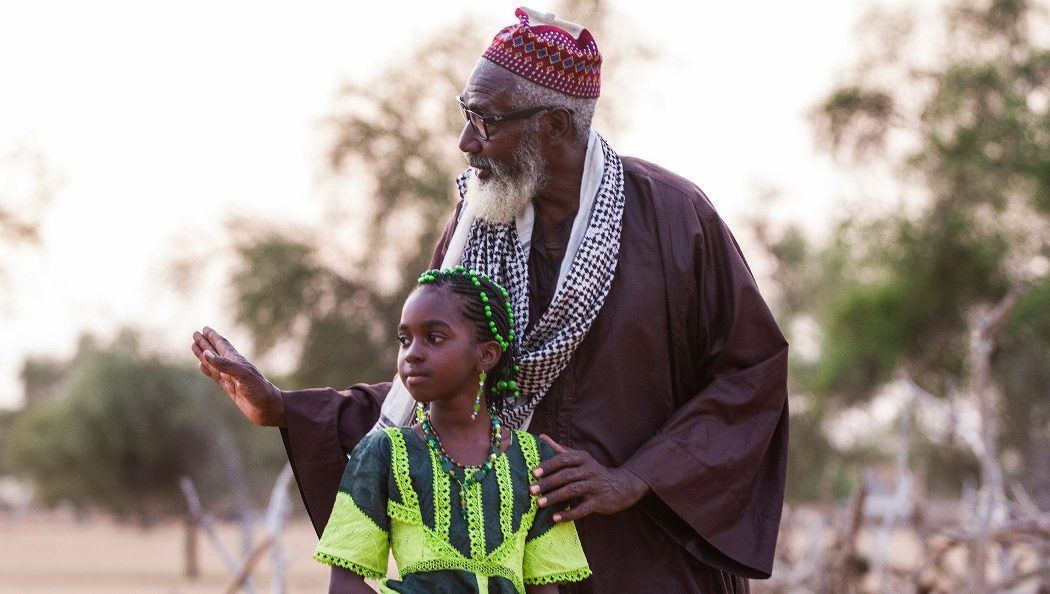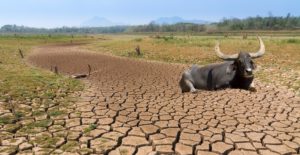The first thing you notice about the garden is how out of place it looks in this dusty, hazy landscape, where herds of cows kick up sandstorms and goats nibble at sparse weeds below scraggly trees.
The garden is a swatch of vibrant color: green tufts growing lettuce, aubergine, watermelon and other produce form tidy rows, and women in bright skirts walk through, bringing tin watering cans from the well to hydrate this lush little corner in a vast, parched landscape.
 Here, in Koyli Alfa village in central Senegal, Batta Mbengu works in this garden every Wednesday; there are almost 300 women who labour here, divided into groups of 30, with each group taking a weekly shift. And every week, each woman contributes 100 West African francs (about 14p) to a tontine – a communal pot of money that any member can cash out when she needs it.
Here, in Koyli Alfa village in central Senegal, Batta Mbengu works in this garden every Wednesday; there are almost 300 women who labour here, divided into groups of 30, with each group taking a weekly shift. And every week, each woman contributes 100 West African francs (about 14p) to a tontine – a communal pot of money that any member can cash out when she needs it.
But Koyli misses her brother, Ndiaga, who languishes in prison for trying to illegally emigrate to Europe, along with millions of others.
To encourage men like Ndiaga and their children to stay in their countries of birth, the World Bank, the European Union, and other international donors and development organisations are banking on gardens like this one.
They are part of the 4000-mile Great Green Wall, an effort to undo the environmental devastation of climate change, and the human misery that comes with it.
The Great Green Wall is a $8 billion project that’s a combination of ecological restoration, regenerative agriculture, and reforestation. It’s designed to regenerate degraded land in desertified parts of Africa on a massive scale.
It’s an African-led project with an epic ambition: to grow an 8000km natural “wonder of the world” across the entire width of Africa. Its goal is to provide food, jobs and a future for the millions of people who live in a region that’s on the front lines of climate change.
Once completed, the Great Green Wall will be the largest living structure on Earth, and a new Wonder of the World.
The Great Green Wall is currently taking root in the Sahel region, at the southern edge of the Sahara desert – one of the poorest places on the planet. More than anywhere else on Earth, the Sahel is seeing the effects of anthropogenic climate change.
Millions of residents are already facing its devastating impact. Persistent droughts, lack of food, conflicts over fewer natural resources, and mass migration to Europe are some of the many consequences.
Yet, local people from Senegal in the west to Djibouti in the east are fighting back. Since the birth of the Great Green Wall initiative in 2007, life has started coming back to the land, bringing greater food security, jobs and stability to people’s lives. But the Great Green Wall isn’t just for the Sahel. It is global symbol for humanity overcoming its biggest threat – our changing environment.
By 2020, 60 million people from sub-Saharan Africa are expected to migrate because of desertification.
Will the Great Green Wall encourage people to stay, or will the rural revitalization it riggers merely help them earn the money they need to leave for even greener pastures elsewhere?
Unless otherwise credited, all photos courtesy of Great Green Wall.


